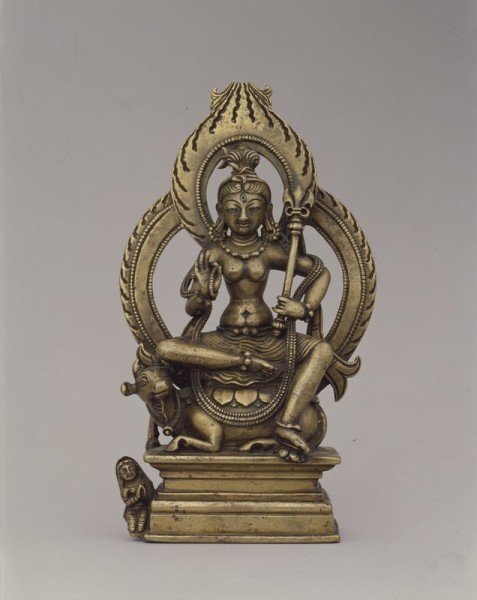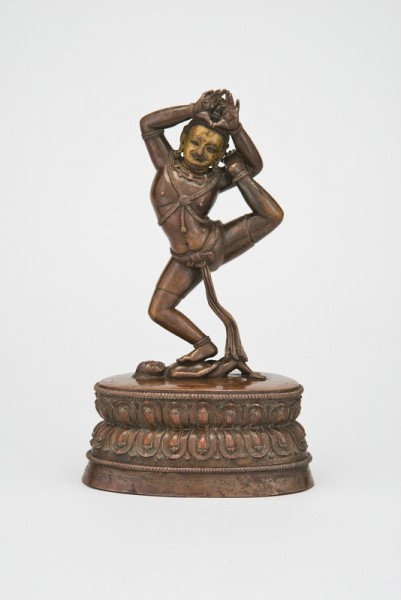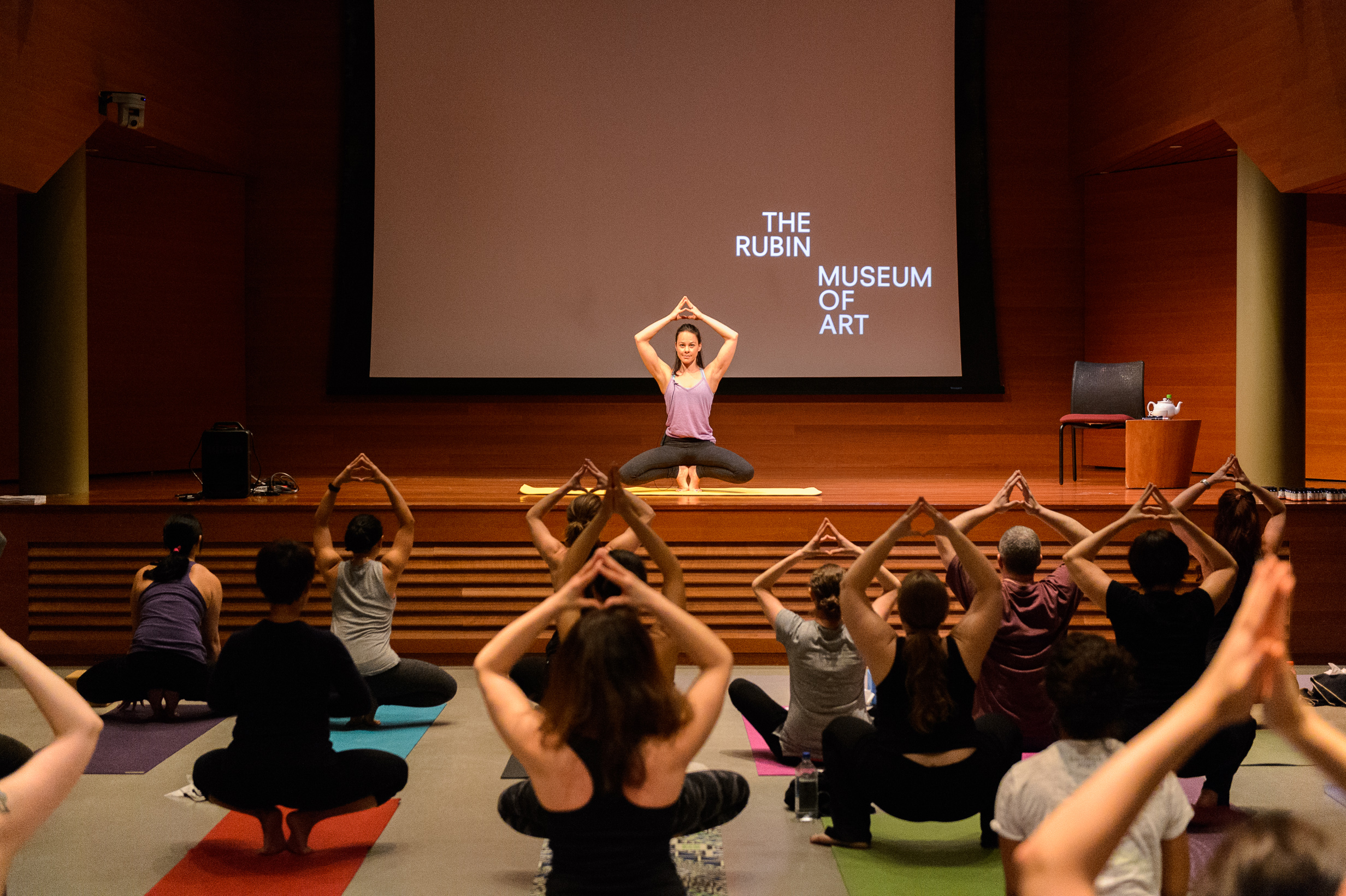
In-breath. Out-breath. Do you practice yoga to get your heart pumping or as a gateway to spiritual development? More than ever before, yogis in the United States are seeking the latter and Kundalini is one of the most popular paths to spiritual growth.
The Kundalini yoga tradition has a complicated and ancient history. You’ll see that chronicled in many works of art on display at the Rubin. But let’s start at the beginning:
What Exactly is Kundalini Yoga?
What’s called Kundalini yoga today is actually a synthesis of several different yoga traditions, including hatha, kriya, and tantric yogas Like hatha yoga, it includes the use of asana (body postures) and pranayama (breath work). Like the contemplative kriya yoga tradition, it incorporates discipline and self-study. And, Kundalini borrows much its philosophy from the tantric yogic tradition, seeking to unify dualistic concepts of the mind and the body in order to realize the true nature of reality.
Below, you can see a sculpture of Parvati, who is considered the quintessential yogini, bringing together body and mind. As Yoga Journal writes, the yogini is “independent yet devoted, a teacher as well as a wife; Parvati’s name is synonymous with yogic willpower as well as with love.”

Kundalini Philosophy: The Microcosm and the Macrocosm
Inside your body is an entire universe of cells, organs, and complex processes. This concept is also one of the most ancient ideas that exists in the Kundalini yoga tradition: the relationship between the microcosm and the macrocosm. Early Hindu texts like the Rig Veda explain that the universe was created when a cosmic man or purusha sacrificed himself, bringing all other life into creation. As tantric philosophy and practices developed in medieval India, the link between the body’s energy systems and the movements of the cosmos became increasingly popular. Kundalini yoga utilizes this connection between the outer and inner worlds for realizing the true unification of all things.
Kundalini Yoga Practices
In Kundalini practice, energy sits at the base of the spineand must be awakened through spiritual practice. Energy is like a coiled snake that travels up the channels of the body through exercises and rituals, purifying the energy in the six main chakras of the body until it reaches the crown of the head. Known as a Kundalini “break,” this movement of energy can be quite intense for practitioners, both emotionally and physically—usually requiring professional supervision. After the Kundalini energy rises to the crown of the head, it descends back down but instead of simply purifying the chakras in the body, the energy now empowers them creating an overwhelming sense of unity.
Below, Buddhist Indian saint Jalandhara performs the Jalandhara bhanda. Bhanda means “bond” in Sanskrit and refers to using the body to block or control the flow of energy. Some of the movements of contemporary Kundalini students emulate Jalandhara’s asanas from thousands of years ago.

Whether you’re an accomplished yogi or new to Kundalini practices, our galleries are a place to find inspiration and deepen your understanding of yoga and its complex history.
As you learn about energy channeling through the body, be sure to plan a visit to the OM Lab, opening in February. Offer your voice in our OM Lab, and enjoy two days of related performances and experiences on Friday, February 24 and Saturday, February 25.

